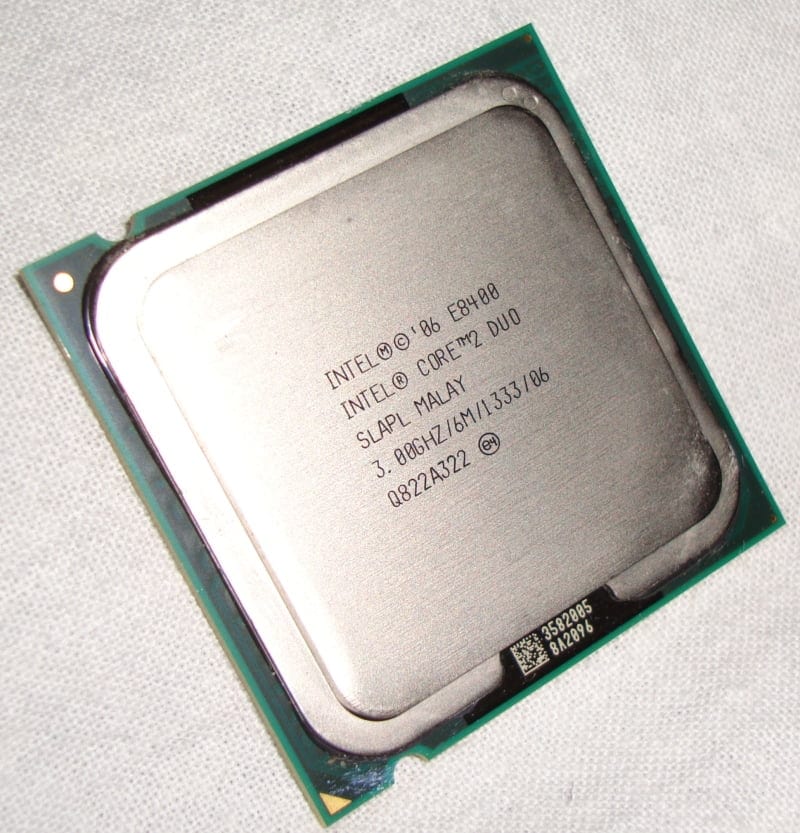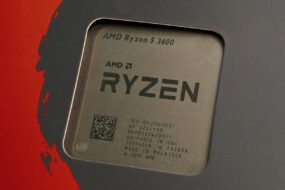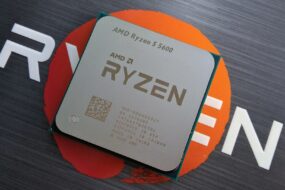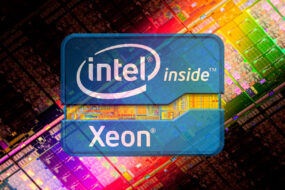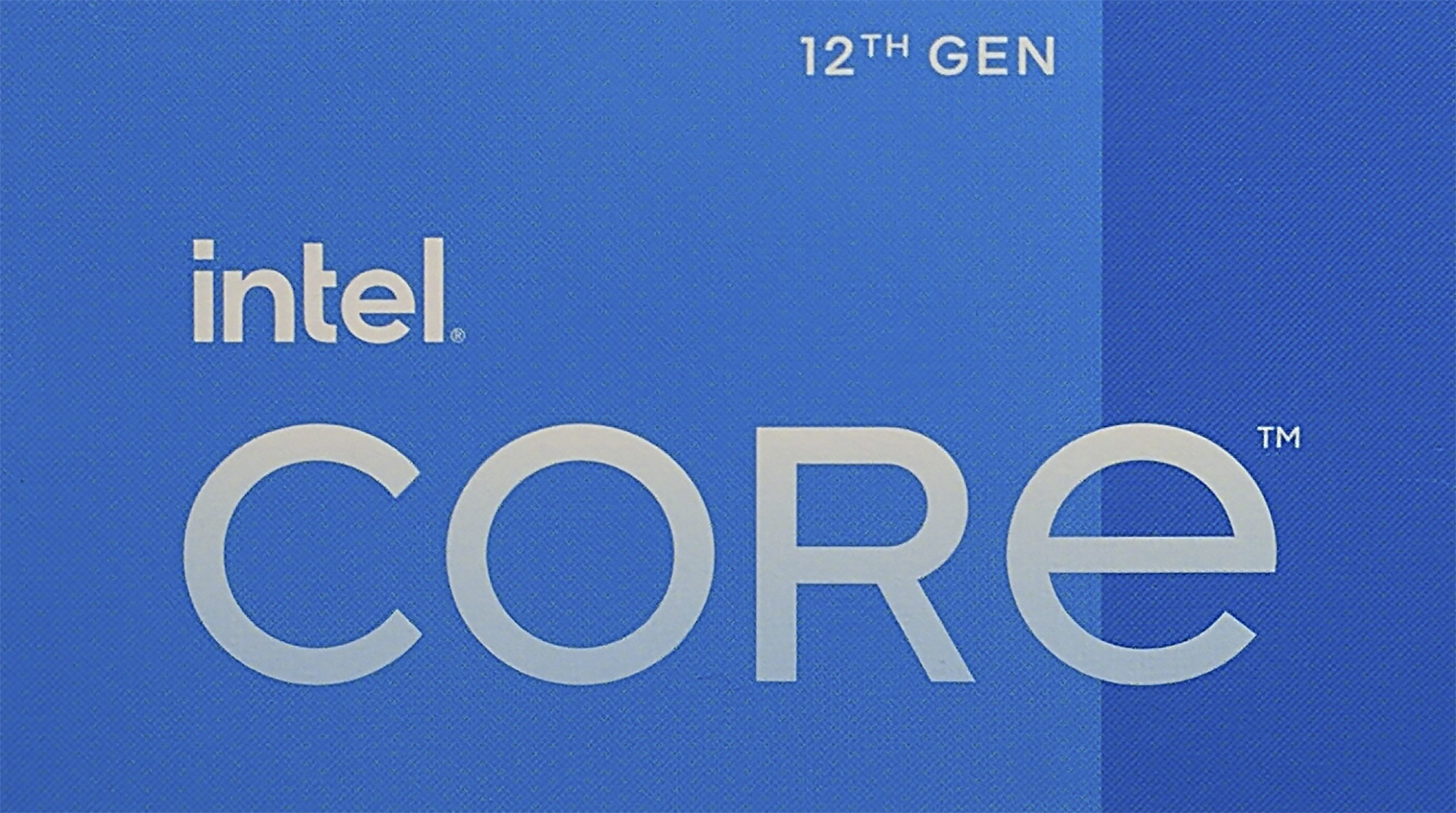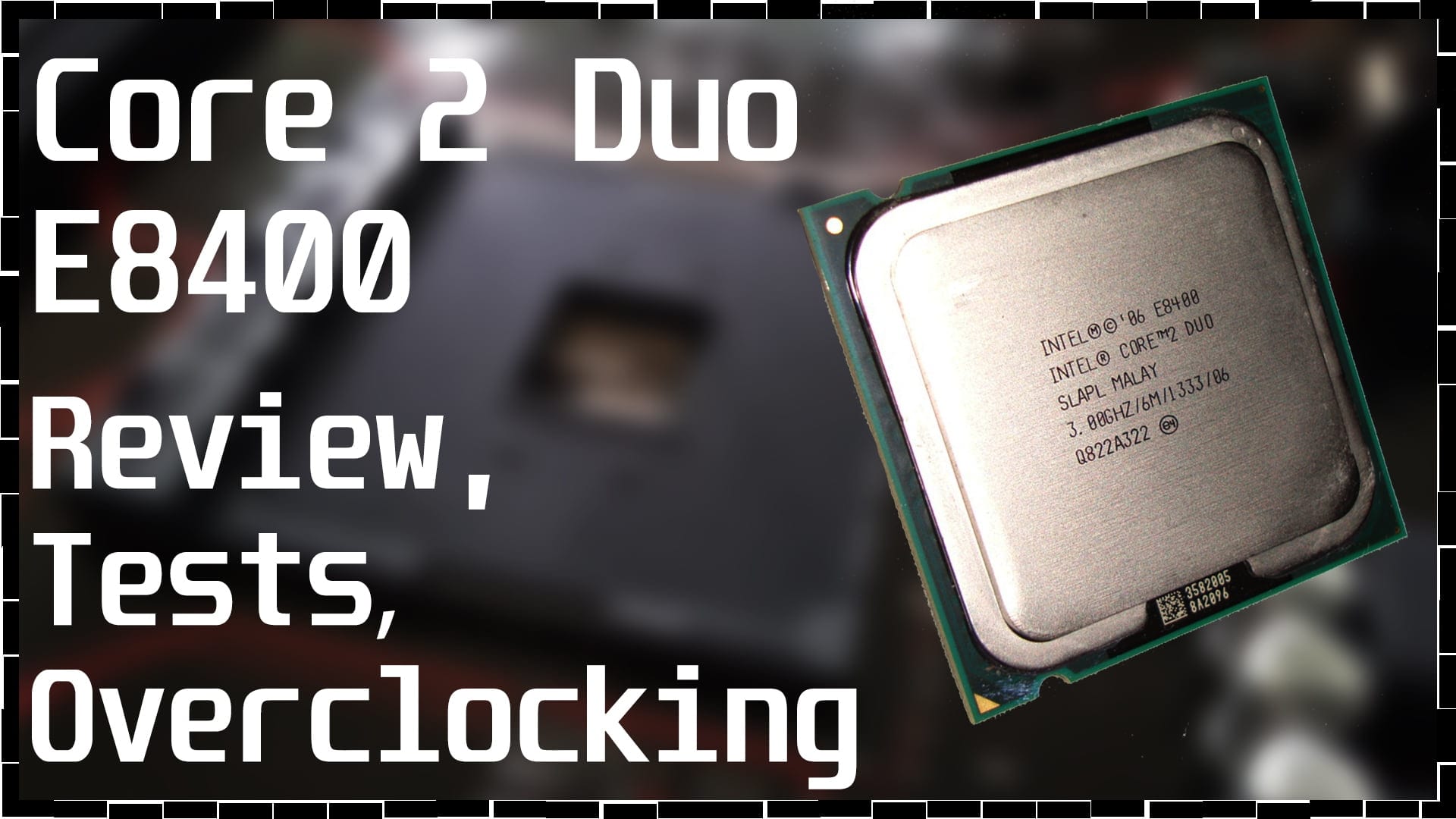
Intel processors are very rare on our site. But this does not mean that we like AMD more. There are other reasons for this. You probably know the prices for the processors of this corporation. Let’s put it mildly, they are not small. I cannot say that this is unreasonable since their architecture stands head and shoulders above that of a competitor. There are exceptions, though. I don’t think there will be a person who would prefer to buy, for example, Pentium Dual-Core E5400 instead of Athlon II X2 250. Their frequency potential is about the same, about 4GHz. The overpayment for a lower frequency, more expensive motherboard is evident. But this is the budgetary sector. At the top, everything is completely different. The same example – who wants to buy a Phenom II X6 instead of a Core i5 2500K or Core i5 760? Yes, there are really six cores, but is it worth it? Indeed, in terms of performance per core ratio, Intel processors have no equal now!
We buy hardware for our own money, or we take it from friends. Rarely can anyone afford to buy, for example, Core 2 Quad Q9xxx, or Core i7 2xxxK (it doesn’t make sense to buy others, since AMD Phenom II is available for less money)?
Very soon, a review of the Core i5 2500 processor with a locked multiplier will appear on our website. Yes, this is a minus, overclocking will stop without starting. But does it really need it?
Well, I started talking. This review is devoted no longer to a new, but as it seems to me, still actual processor Core 2 Duo E8400. Its small number of cores today does not give the performance that applications require at the moment, but perhaps overclocking will correct this situation?
Processor
It’s time to move on to the subject overview. First, let’s take a look at it photo:
Marking test specimen SLAPL, it was produced in Malaysia. Screenshot of the CPU-Z utility:
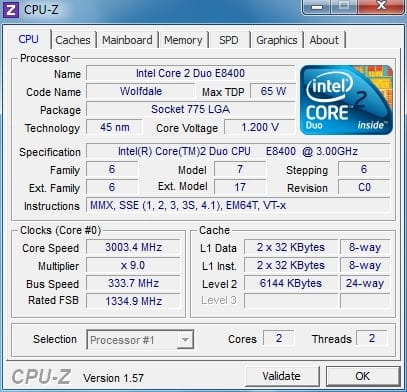
Here is one of the first-class representatives of the 45nm Wolfdale core. It is equipped with a 6MB L2 cache, the base core voltage is 1.200V. Its base frequency is 3 GHz, it is obtained by multiplying the system bus (333 MHz) by a factor of 9. The revision of our C0 copy, which, in principle, is not very encouraging. Typical heat dissipation is 65 watts.
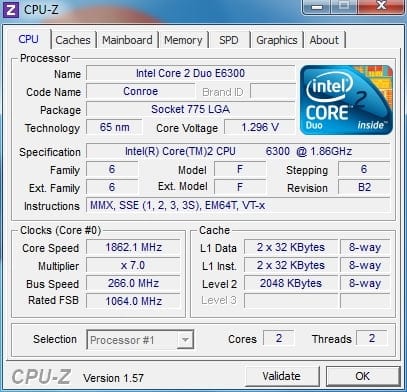
One of the most popular processors based on the 65nm Conroe core. Its disadvantage is a very low multiplier, not the weakest motherboard is required to overclock to frequencies above 3GHz.
The processor has a 2Mb L2 cache, operates at a clock frequency of 1866MHz (266×7) at a voltage of 1.300V, a bus frequency of 1066MHz. Core revision B2, typical heat dissipation 65 watts.
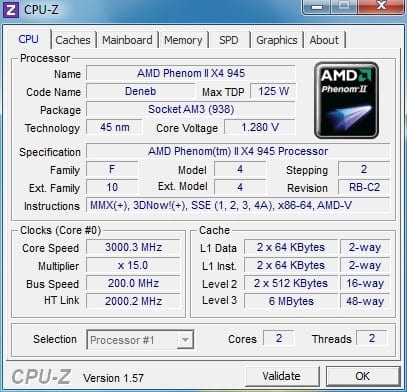
And the last player in today’s match. Since there was no Phenom II X2 545 in the laboratory, the decision came to my mind to disable two cores of the existing Phenom II X4 945 using the motherboard bios, thus getting the required processor without any problems. That has been done successfully. As you may have already noticed, in the “Cores” cell there is a number 2, which confirms the successful shutdown of two of the four cores.
The processor is based on the 45nm Deneb core revision C2 has 512Kb L2 cache per core and a shared 6Mb L3 cache. The base frequency of the chip is 3000MHz (200×15), the frequency of the HT bus and CPU NB / L3 is 2000MHz. Typical heat dissipation 95 watts (for two cores).
Test setup:
- Motherboard AM3 – ASUS M4A785TD-V EVO
- Motherboard LGA775 – Biostar P35D2-A7
- Processors – Core 2 Duo E8400, Core 2 Duo E6300, Phenom II X4 945 (disabled two cores)
- CPU cooling AM3 – Cooler Master Susurro (RR-KCT-T9E1)
- CPU cooling LGA775 – Zalman 7700cu
- RAM – 2GB Hynix PC6400 (5-5-5-16) – for testing and stable overclocking;
- RAM – 512Mb Hynix PC6400 (5-5-5-15) – for “frosty freshness”
- RAM – 2GB Corsair XMS3 PC10700 (9-9-9-34)
- Video card – ASUS GeForce 9800GT@780/1900/2000MHz (GPU/SP/Mem)
- Power supply – FSP 400W
- HDD – Samsung SP160GB
Software:
- Windows 7 x64 SP1
- CPU-Z 1.57
- CineBench 9.5 x64
- CineBench 11.0 x64
- Light Work – Renderbench
- 3D Mark 2006 v1.2.0 (CPU test only)
- 3D Mark Vantage v1.1.1 (CPU test only)
- Hot CPU tester PRO
- NVIDIA ForceWare 260.99
- wPrime v1.55
- Fritz Chess Benchmark
- x264 Benchmark v4.0
- SuperPi 1.4
- PiFast
- FRAPS v3.1.0/build11052
Graphics quality settings in games:
GTA4:
- Resolution – 1280х1024
- Textures – high
- Reflection resolution – high
- Water quality – very high
- Shadow quality – high
- Filtration quality – x16
- Viewing distance – 100
- Detail depth – 100
- Traffic flow – 100
- Depth of field of observation – on/on
- Vertical sync – off/off
Prototype:
- Resolution – 1280х1024
- Textures – high
- Shadows – high
- Anti-aliasing – 0х
Overclocking
Knowing the excellent overclocking potential of 45nm Wolfdale, I set the system bus frequency to 450MHz without raising the voltage, which should have given me 4050MHz. The OS booted, but on the first run, LinX went to reboot. Raising the voltage to 1.350V allowed a 20-minute test to pass, but then the same reboot. Only at 1.408V, the processor ran for an hour in LinX without a glitch.
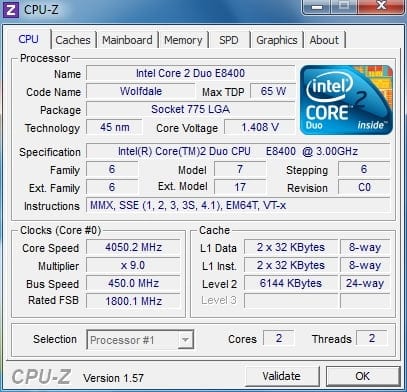
Not much. The hottest core warmed up to 72 degrees. The RAM frequency was equal to 900 MHz, with timings of 5-5-5-15. It was decided to move the test bench to the balcony. Here things immediately went up:
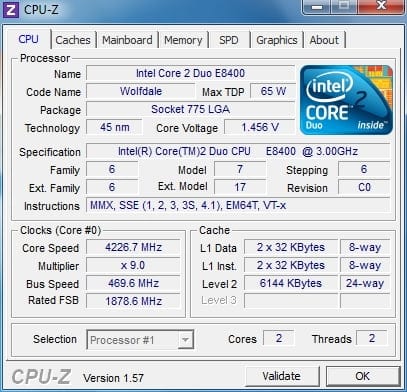
At a voltage of 1.456V, we managed to conquer 4226 MHz.
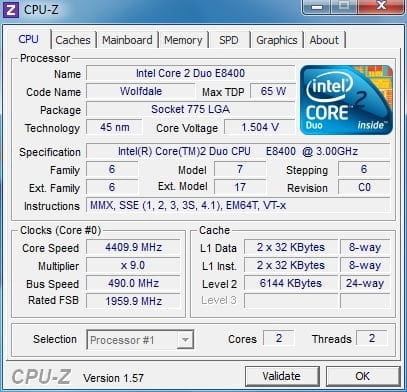
1.504V paved the way for 4409MHz. By the way, stability was out of the question. The stand 7700cu could not hold back the increased ardor of the E8400 even at 5 degrees outside.
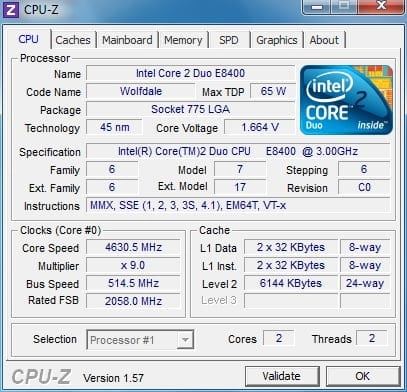
Here the processor has already begun to react badly to voltage increases. 4630MHz at 1.664V. This is no longer safe. It is advisable not to raise the voltage above 1.550V without a water cooling system.
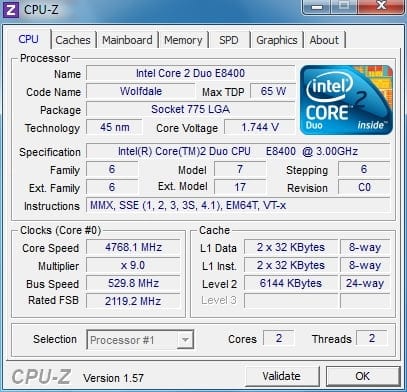
That’s all, at a frequency of 4768 MHz, my subject rested… most likely in the cooling system. The voltage had to be raised to the menacing 1.744V. For a short time, such an overestimate is safe but it should not be abused. The crystal may degrade, and even stable 4GHz may not be available to you.
Let’s move on to overclocking the rest of the test participants. Core 2 Duo E6300 is based on the old 65nm Conroe core. Its stable overclocking is limited to 3600MHz, and in most cases to 3400MHz. Everything turned out to be even worse for me:
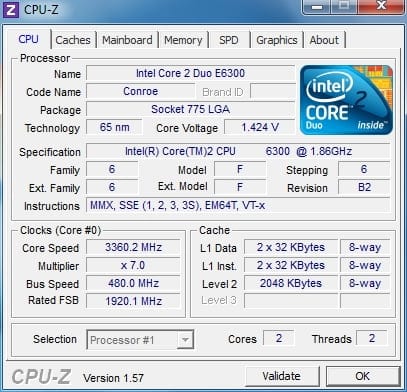
The RAM frequency was 960 MHz with timings of 5-5-5-15.
The only benefit of such overclocking is the ability to compare it with the E8400 operating at ифыу frequencies. Although, probably, I’m just used to 45nm chips. After all, the frequency of the E6300 has been increased by 80%! The overclocking of the Phenom II X2 945 did not bring any surprises. At a voltage of 1.440V, we managed to achieve stable operation at a frequency of 3810MHz.
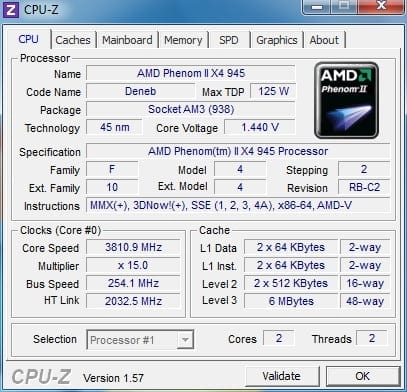
The reason for such low overclocking can be seen from the screenshot of the CPU-Z utility, old revision C2. The memory controller and L3 cache worked at 2540MHz, RAM at 1651MHz, with timings 9-9-9-24. With overclocking sorted out, it’s time to move on to studying the performance of processors.
Rendering
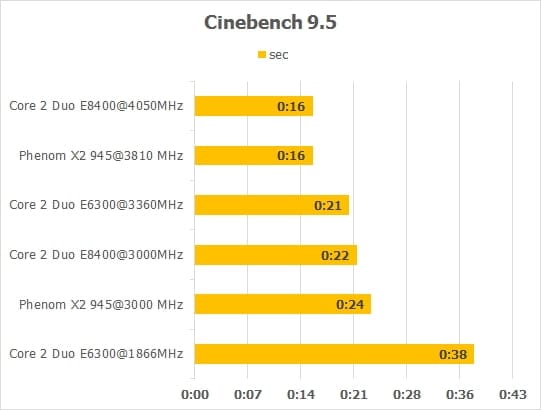
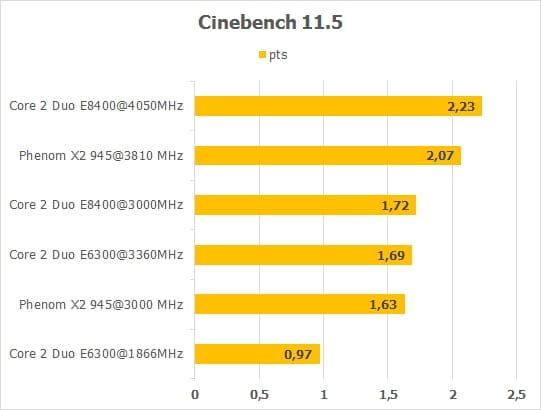

Core 2 Duo E8400 took the lead in the benchmarks showing the performance of processors in rendering, both in base value and in overclocking. E6300 is an outsider, but as soon as it is overclocked, it starts to overtake its opponents working at the base frequency. Although the Phenom II X2 945 could not outrun its rival. But considering that its overclocking never reached 4000 MHz, this cannot be called a complete loss.
Overall performance
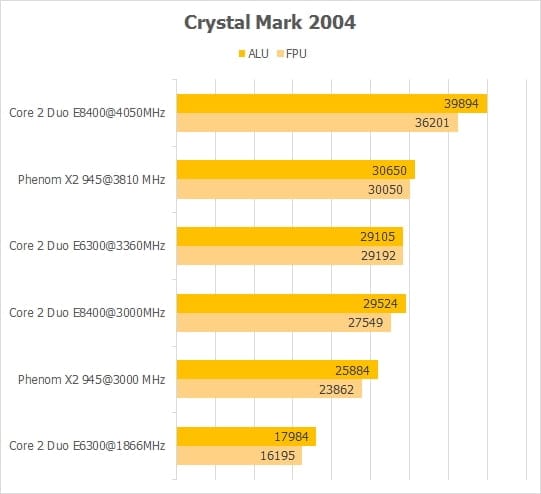
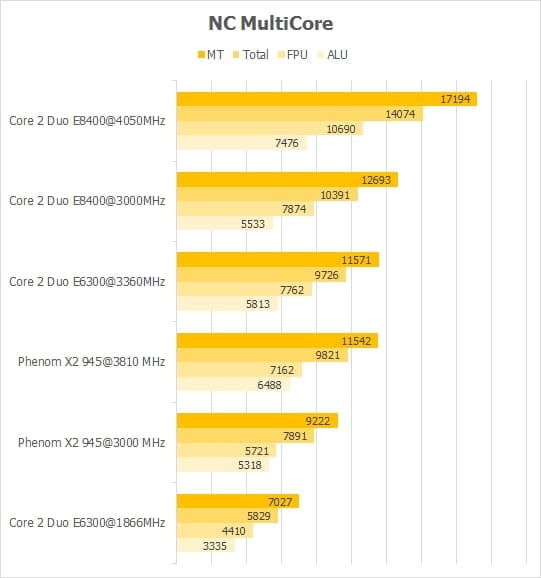
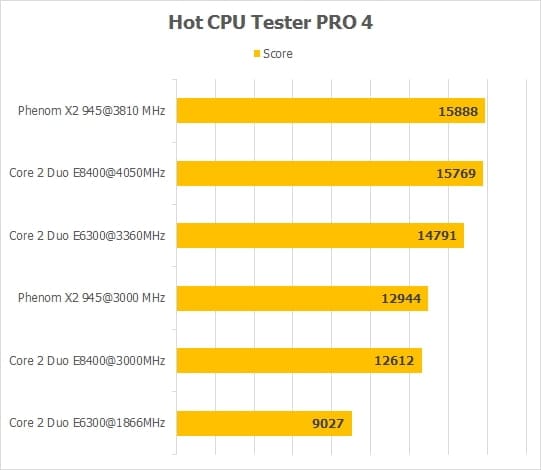
The first two test packages gave the first place to the E8400, with an impressive margin, both at the base frequency and in overclocking. The third test, called Hot CPU Tester PRO 4, gave its preference to the Phenom II X2, both in base value and in overclocking. The E6300 is doing well, despite its small L2 cache; during overclocking it outperforms both the E8400 and the Phenom X2 operating at the base frequencies.
Calculations

The calculation of chess moves is clearly better done on Intel processors, the overclocked Phenom II X2 945 barely outperformed the E6300 and E8400.
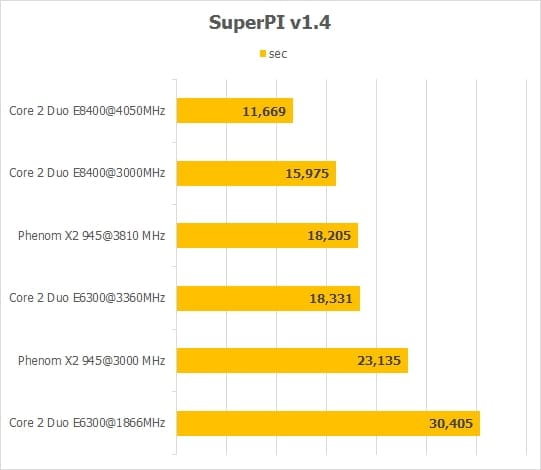
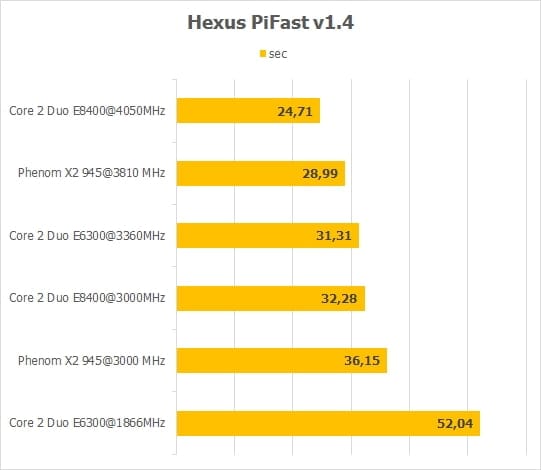
Intel processors have always calculated the number of Pi faster than competitors, today’s test is no exception, alas.
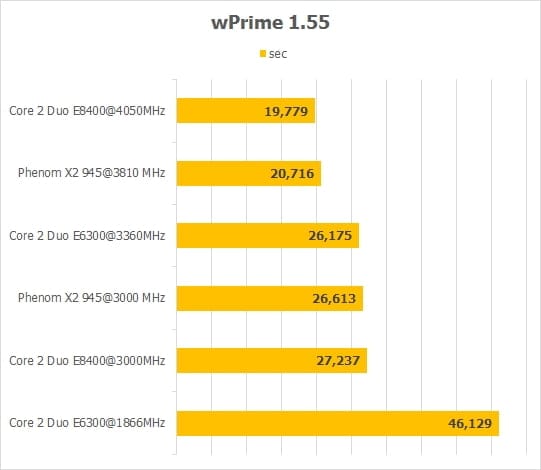
But wPrime gave a surprise, here the Phenom II X2 945, operating at the base frequency, outperforms the E8400, which works the same way at the nominal. Overclocking, of course, put everything in its place, the frequency played its role and the E8400 was again ahead.
Coding
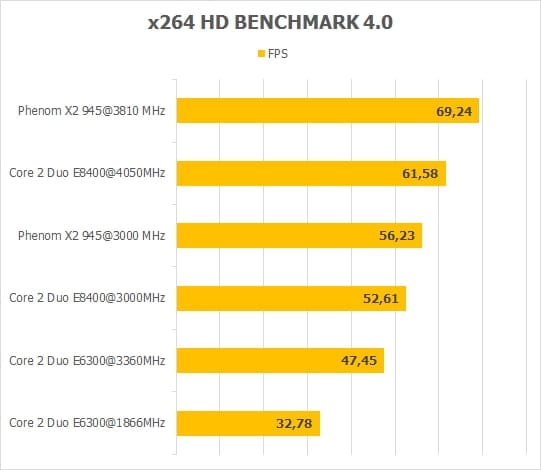
Your hobby is video encoding to x264 format? Then you can’t go wrong with the Phenom II X2; even overclocking to 4050 MHz could not help the E8400 to outrun the enemy operating at 3810 MHz.
Archiving

If you do a lot of archiving, you will also be more interested in the Phenom II X2 than the Core 2 Duo E8400.
Games: Synthetics
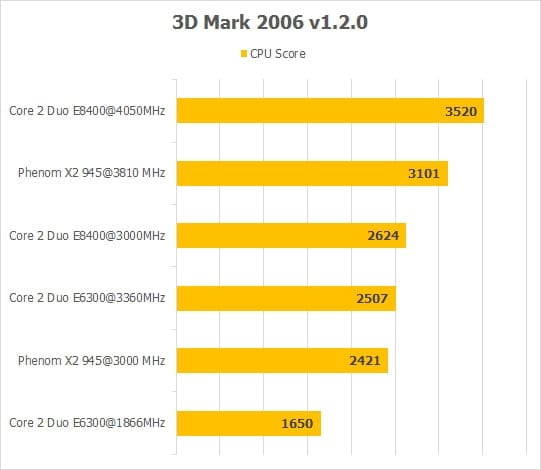
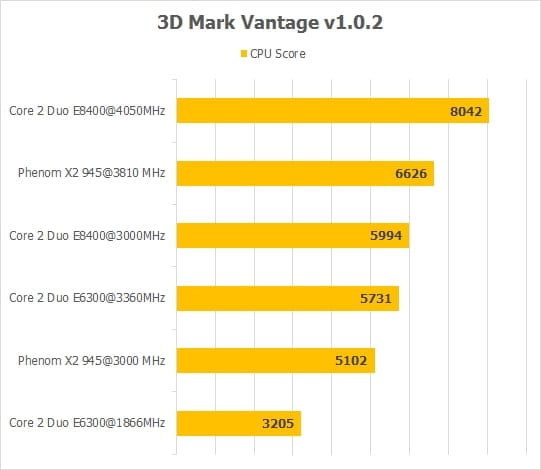
Eh, how well everything started with Phenom. The total superiority of the Core 2 Duo E8400, both in the base value and in overclocking, and in the latter mode the gap increased even more.
Games:
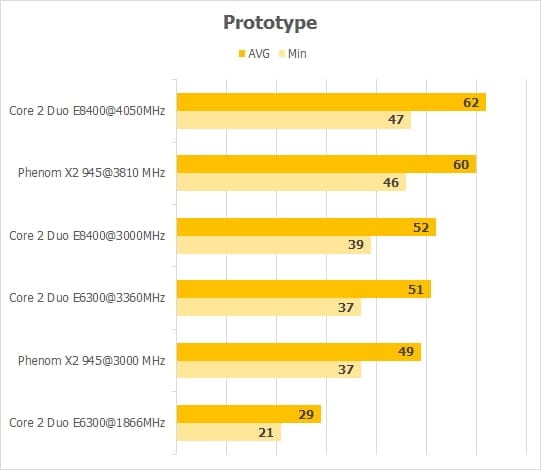
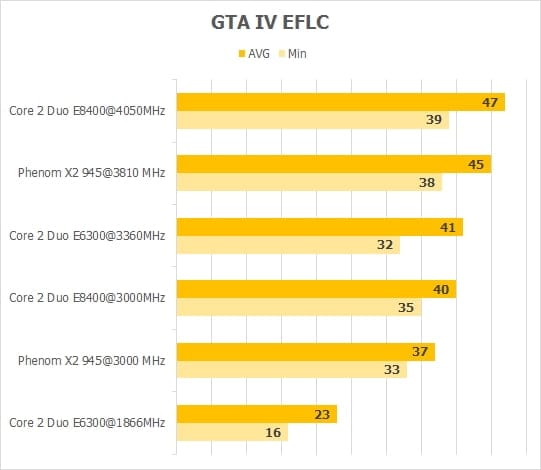
As it has long been known, games love huge cache memory, or even better, working at high frequencies, and so, this is not about the Phenom II X2 945, its third-level cache does not work at the core frequency, as in Core 2, but at the controller frequency memory. And its frequency could not be increased to more than 2500 MHz. As a result, the loss is at par and in overclocking.
Conclusion
At one time, the series of processors Core 2 Duo Е8ххх made a lot of noise. Many records have been broken thanks to them. They have been chosen by leading sites as “game processors” more than once.
Этот поистине легендарный процессор доказал, что он все еще используется, по крайней мере, до выпуска AMD Bulldozer и Intel Ivy Bridge.
P.S. The Core 2 Duo E6300 performed well throughout the test, and overtaken more than once overclocked rivals operating at base frequencies. Commendable for an elderly processor.
